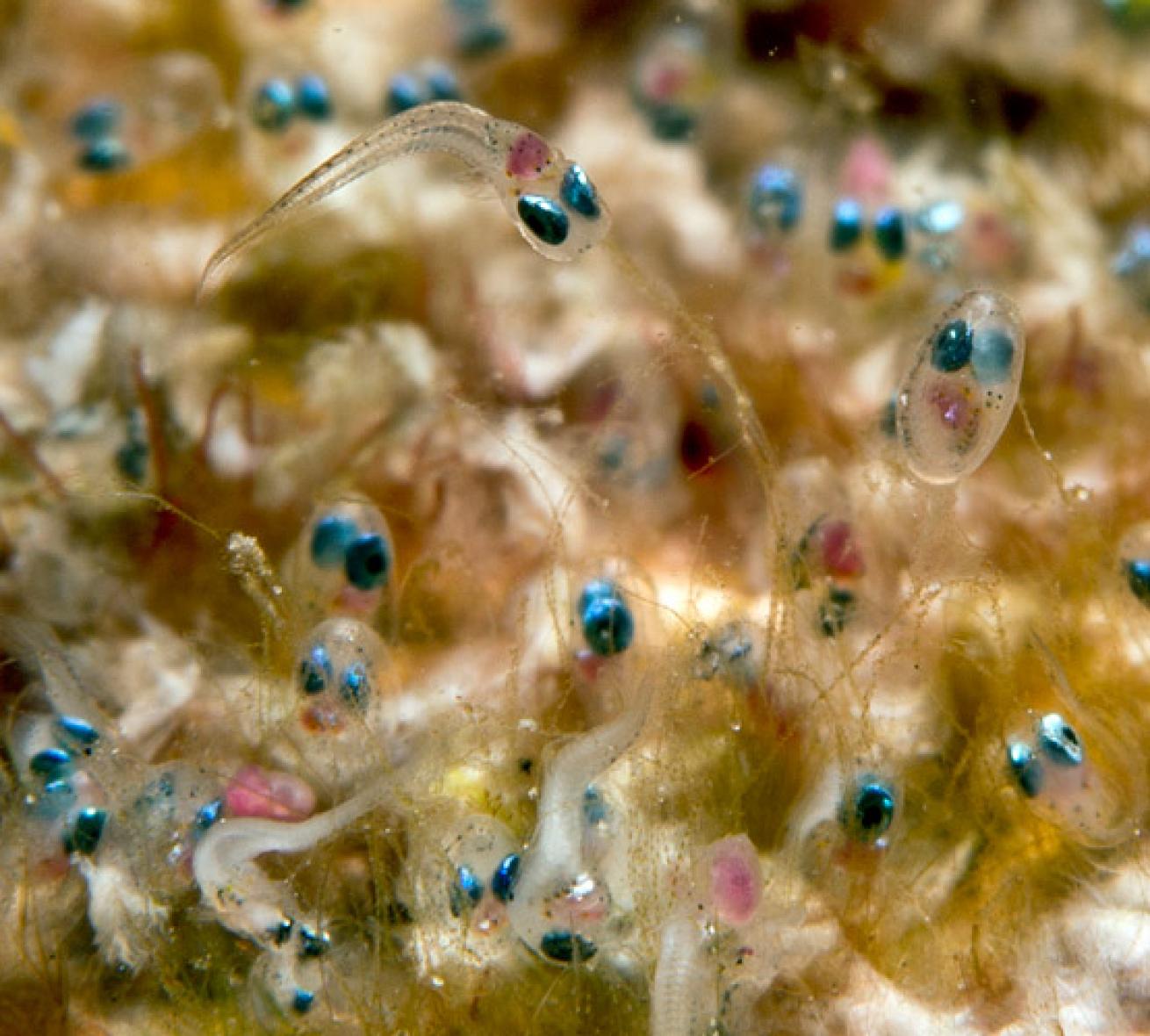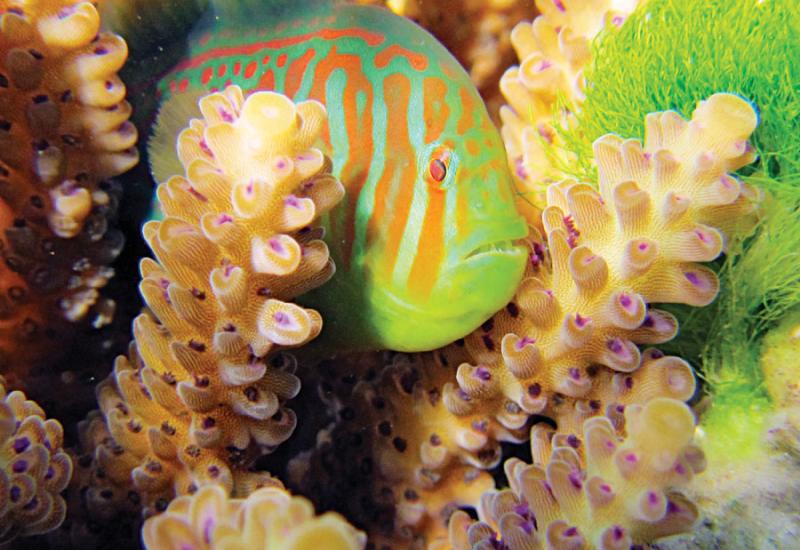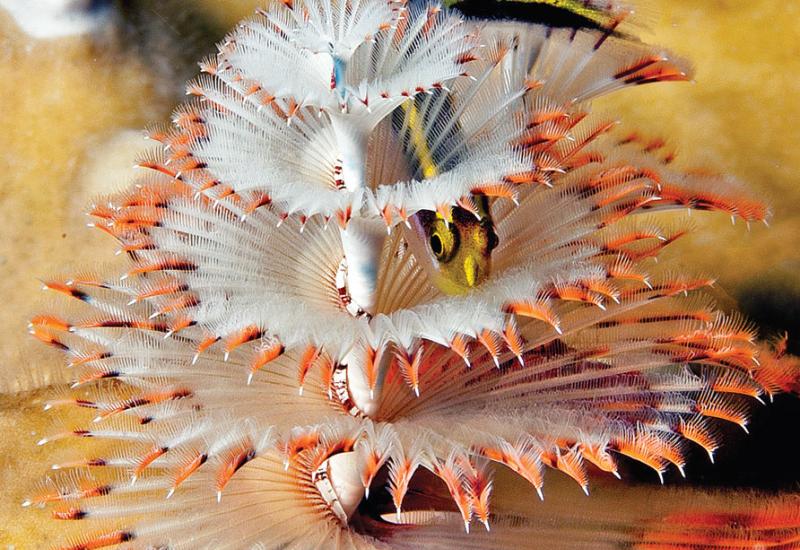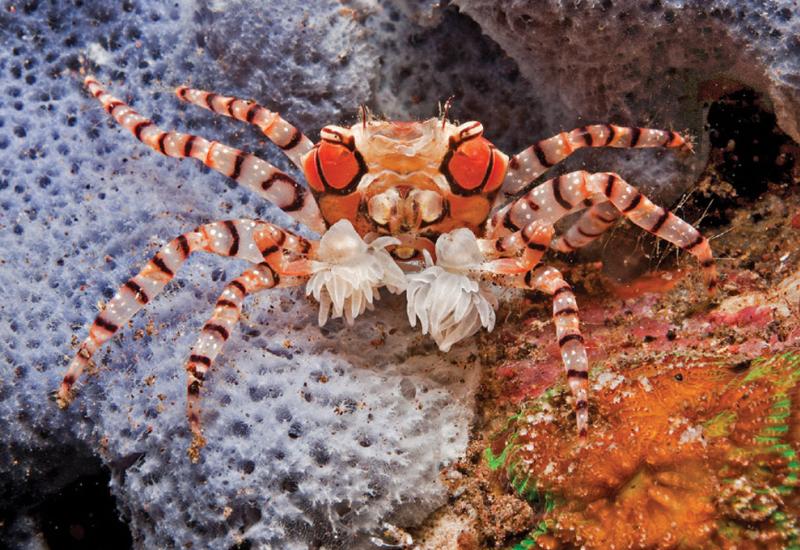Critter Hunt: Sergeant-Major hatching

Sergeant-Major Hatching
Ned and Anna DeLoach
I’d been squinting through my viewfinder for so long that my eyes were beginning to cross, when the first thread-thin sergeant major larva wiggled free from its egg casing and drifted into the night. Although Anna and I had been waiting for weeks to see our first hatching, there was no time for celebration. Within seconds, dozens of damselfish were popping free, followed by hundreds, then thousands. Minutes later, the platter-size nest lay bare.
Sergeant major nests are not difficult to find. From spring through summer, almost every dock piling or inshore reef in the Caribbean becomes a breeding ground for the prolific species. When some yet-unknown cue strikes, males choose a hard, flat surface and pick it as clean as a dinner plate before turning steely blue and advertising for mates. Over consecutive days, multiple females lay adjoining strands of reddish, yolk-rich eggs, which the male vigilantly guards.
Our initial attempts to witness the event took a number of wrong turns before we finally got things right. As it turned out, hatching times are forecast by the developing embryo’s color. A day or two before the event, eggs turn increasingly dark as silver eye pigment begins dominating the casings. In the afternoons, we make reconnaissance dives to select the darkest, most developed egg patch. If we guess right, four to five days following fertilization and approximately 30 minutes after sunset, the nest explodes with life. The brood’s patriarch, exhausted from continually nursing and patrolling, will take a few days off before soliciting a new set of brides and beginning the cycle once again.

Ned and Anna DeLoach
I’d been squinting through my viewfinder for so long that my eyes were beginning to cross, when the first thread-thin sergeant major larva wiggled free from its egg casing and drifted into the night. Although Anna and I had been waiting for weeks to see our first hatching, there was no time for celebration. Within seconds, dozens of damselfish were popping free, followed by hundreds, then thousands. Minutes later, the platter-size nest lay bare.
Sergeant major nests are not difficult to find. From spring through summer, almost every dock piling or inshore reef in the Caribbean becomes a breeding ground for the prolific species. When some yet-unknown cue strikes, males choose a hard, flat surface and pick it as clean as a dinner plate before turning steely blue and advertising for mates. Over consecutive days, multiple females lay adjoining strands of reddish, yolk-rich eggs, which the male vigilantly guards.
Our initial attempts to witness the event took a number of wrong turns before we finally got things right. As it turned out, hatching times are forecast by the developing embryo’s color. A day or two before the event, eggs turn increasingly dark as silver eye pigment begins dominating the casings. In the afternoons, we make reconnaissance dives to select the darkest, most developed egg patch. If we guess right, four to five days following fertilization and approximately 30 minutes after sunset, the nest explodes with life. The brood’s patriarch, exhausted from continually nursing and patrolling, will take a few days off before soliciting a new set of brides and beginning the cycle once again.










